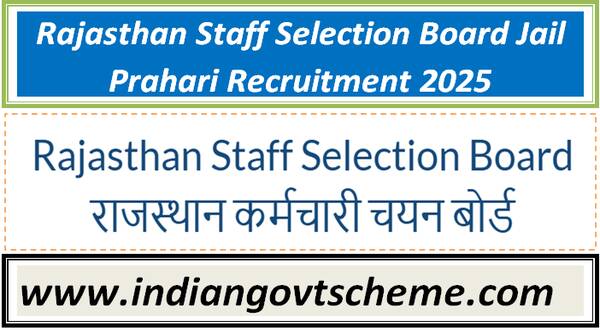Positive Trends in Employment and Unemployment SC/ST/OBC & EWS
The Employment and Unemployment data collected through PLFS by MoSPI shows positive trends nationally and in Uttar Pradesh. Government schemes like ABRY, PM SVANidhi, and PMMY aim to boost employment and entrepreneurship. Various initiatives target skill development and inclusive growth.
GOVERNMENT OF INDIA
MINISTRY OF LABOUR AND EMPLOYMENT
LOK SABHA
UNSTARRED QUESTION NO. 380
TO BE ANSWERED ON 05TH FEBRUARY, 2024
UNEMPLOYMENT AMONG SC/ST/OBC AND EWS
380. SHRIMATI SANGEETA AZAD
Will the Minister of LABOUR AND EMPLOYMENT be pleased to state:
(a) the details of the steps taken by the Government to address unemployment among Scheduled Castes (SC), Scheduled Tribes (ST), Other Backward Classes (OBC), and Economically Weaker Sections in Uttar Pradesh during the years 2022-2023;

(b) whether any permanent employment opportunities have been created for SC, ST, OBC and EWS communities and the number of posts remain vacant as of now and if so, the details thereof;
(c) whether any measures are taken/implemented to expedite the recruitment process, given the disparities in employment opportunities compared to other States;
(d) the steps taken by the Government to aware the rights and opportunities available for SC and ST communities and ensure their equal participation in the workforce; and
(e) the details of the policies being advocated to achieve this goal?
ANSWER
MINISTER OF STATE FOR LABOUR AND EMPLOYMENT
(SHRI RAMESWAR TELI)
(a) to (e): The data on Employment and Unemployment is collected through Periodic Labour Force Survey (PLFS) which is conducted by the Ministry of Statistics & Programme Implementation (MoSPI) since 2017-18. The survey period is July to June of the next year.
As per the latest available Annual PLFS Reports, the estimated Worker Population Ratio (WPR) and Unemployment Rate (UR) on usual status for persons, including SC, ST, OBC and EWS, of age 15 years and above in the country during last three years are as follows:
Table -1
| Year | Worker Population Ratio (WPR) in% | Unemployment Rate (UR) in % |
| 2020-21 | 52.6 | 4.2 |
| 2021-22 | 52.9 | 4.1 |
| 2022-23 | 56.0 | 3.2 |
Source: PLFS, MoSPI
The estimated Worker Population Ratio (WPR) and Unemployment Rate (UR) on usual status for persons, including SC, ST, OBC and EWS, of age 15 years and above in the state of Uttar Pradesh during last three years are as follows:
Table -2
| Year | Uttar Pradesh Worker Population Ratio (WPR) in% | Uttar Pradesh Unemployment Rate (UR) in % |
| 2020-21 | 48.0 | 4.2 |
| 2021-22 | 50.1 | 2.9 |
| 2022-23 | 53.9 | 2.4 |
Source: PLFS, MoSPI
The above data mentioned in Table-1 & Table-2 indicate that the Worker Population Ratio, indicating employment, has increasing trend and the unemployment rate has decreasing trend in the country as well as Uttar Pradesh.
As per information received from Government of Uttar Pradesh, job opportunities to job seekers are facilitated in private sectors through job fairs. Job seekers can participate in job fairs organized by Employment Exchanges of Uttar Pradesh where employers select candidates according to vacancies notified on departmental portal ( https://sewayojan.up.nic.in ). During 2022-23, 1891 job fairs were organized and 2,07,428 candidates selected through the job fairs in Uttar Pradesh.
The employment generation coupled with improving employability is the priority of the Government. Accordingly, the Government of India has taken various steps for generating employment (including the persons from SC, ST, OBC and EWS) in the country (including Uttar Pradesh).
Investments in Infrastructure and productive capacity have a large multiplier impact on growth and employment. The budget of 2023-24 proposed to increase capital investment outlay steeply for the third year in a row by 33 per cent to Rs 10 lakh crore, which would be 3.3 per cent of GDP. This substantial increase in recent years is central to the government’s efforts to enhance growth potential and job creation.
The Government of India has announced Aatmanirbhar Bharat package to provide stimulus to business and to mitigate the adverse impact of Covid 19. Under this package, the Government has provided fiscal stimulus of more than Rupees Twenty-Seven lakh crore. This package comprises of various long-term schemes/ programmes/ policies for making the country self-reliant and to create employment opportunities.
The Aatmanirbhar Bharat Rojgar Yojana (ABRY) was launched with effect from 1st October, 2020 to incentivize employers for creation of new employment and restoration of loss of employment during Covid-19 pandemic. The terminal date for registration of beneficiaries was 31.03.2022. Since inception of the scheme, till 19.01.2024, benefits have been provided to 60.49 lakhs beneficiaries under the scheme.
The Government is implementing Prime Minister Street Vendor’s Atma Nirbhar Nidhi (PM SVANidhi Scheme) since June 01, 2020 to facilitate collateral free working capital loan to street vendors to restart their businesses, which were adversely impacted during the Covid-19 pandemic. As on 31.01.2024, 83.67 lakh loans have been sanctioned under the scheme.
Pradhan Mantri Mudra Yojana (PMMY) was launched by the Government for facilitating self-employment. Under PMMY, collateral free loans up to Rs. 10 lakhs, are extended to micro/small business enterprises and to individuals to enable them to setup or expand their business activities. As on 26.01.2024, more than 46.16 crore loan accounts sanctioned under the scheme.
The Production Linked Incentive (PLI) scheme is being implemented by the Government with an outlay of Rs. 1.97 lakh crore, for a period of 5 years starting from 2021-22 which have potential for creating 60 lakh new jobs.
PM Gati Shakti is a transformative approach for economic growth and sustainable development. The approach is driven by seven engines, namely, Roads, Railways, Airports, Ports, Mass Transport, Waterways and Logistics Infrastructure. This approach is powered by Clean Energy and Sabka Prayas leading to huge job and entrepreneurial opportunities for all.
The Government of India is encouraging various projects involving substantial investment and public expenditure on schemes like Prime Minister’s Employment Generation Programme (PMEGP), Mahatma Gandhi National Rural Employment Guarantee Scheme (MGNREGS), Pt. Deen Dayal Upadhyaya Grameen Kaushalya Yojana (DDU-GKY) and Deen Dayal Antodaya Yojana- National Urban Livelihoods Mission (DAY-NULM) etc. for employment generation. The Government is implementing a programme for skilling of rural youth for entrepreneurship development through Rural Self-Employment and Training Institutes (RSETIs). Further, the Ministry of Skill Development and Entrepreneurship (MSDE) is implementing the National Apprenticeship Promotion Scheme (NAPS), Pradhan Mantri Kaushal Vikas Yojana (PMKVY), Jan Shikshan Sansthan (JSS) Scheme and Craftsman Training Scheme (CTS) through Industrial Training Institutes (ITIs) to enhance the employability of youth.
Besides these initiatives, various flagship programmes of the Government such as Make in India, Start-up India, Stand-up India, Digital India, Housing for All etc. are also oriented towards generating employment opportunities.
All these initiatives are expected to collectively generate employment in the medium to long term through multiplier-effects.
Filling up of vacant posts in various Ministries/ Departments is a continuous process and efforts are made to fill up the vacancies as per the provisions of the relevant recruitment rules.
Instructions have been issued by Department of Personnel and Training to all Ministries/Departments of the Central Government to constitute an In-House Committee for identification of backlog reserved vacancies, to study the root cause of such vacancies, to initiate measures to remove the factors causing such vacancies and to fill them up through special recruitment drives. Implementation of the instructions on reservation by Ministries/Departments is followed up from time to time and handholding workshops are also organised.
Government has taken various steps to ensure transparency and fairness of appointments by simplifying the selection process and leveraging technology including reduction in the number of examination tiers, shortening of the examination cycle, conduct of computer-based examinations in place of paper- based examinations, abolition of interviews for lower-level posts and introduction of regional languages in Staff Selection Commission Examinations.
Ministry of Social Justice and Empowerment has formulated an umbrella scheme “ Support for Marginalised Individuals for Livelihood and Enterprise (SMILE)” which aims at economic, educational and social empowerment of its target groups.
National Career Service Centres for SC/STs are engaged in enhancing the employability of SC/ST jobseekers. These Centres conduct outreach activities for wider publicity and creating awareness among SC/ST population. National Career Service Portal provides variety of employment related services to all categories of jobseekers including SC, ST, OBC and EWS. These services are available at pan India basis. Employment services are also provided through a network of 1005 Employment Exchanges across the country.
नोट :- हमारे वेबसाइट www.indiangovtscheme.com पर ऐसी जानकारी रोजाना आती रहती है, तो आप ऐसी ही सरकारी योजनाओं की जानकारी पाने के लिए हमारे वेबसाइट www.indiangovtscheme.com से जुड़े रहे।

